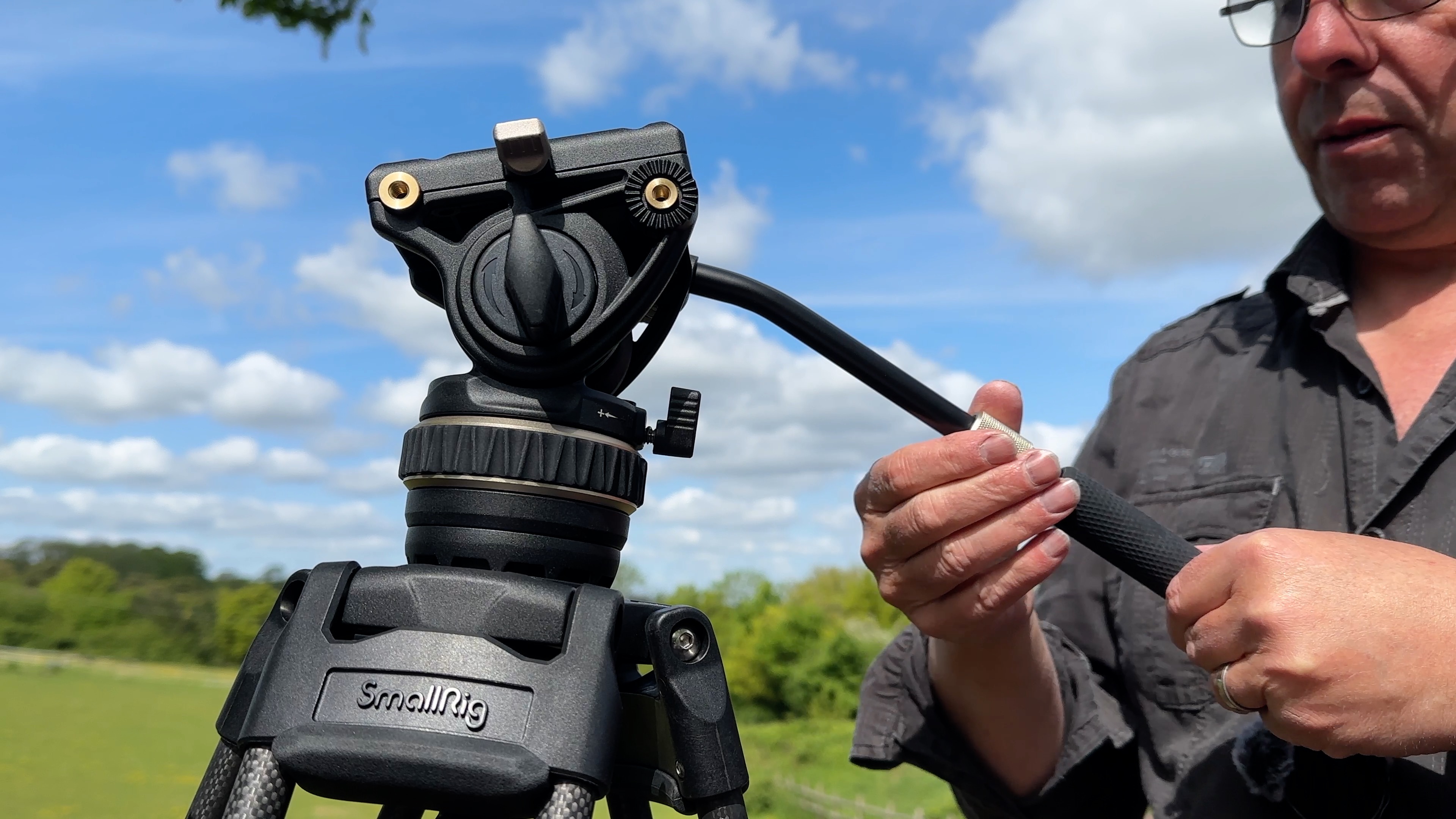
Tripods come in a wide range of shapes, sizes, and weights. At one end of the spectrum, you have petite, portable smartphone tripods such as the Manfrotto PIXI Mini which will comfortably fit inside a typical camera bag. Then you have midrange tripods like the aluminum Benro TSL08A which are still portable and lightweight but can extend to head height to enable DSLR users to shoot locked-off long exposures or capture sharp shots in low-light locations.
At the other end of the spectrum, you have heavy-duty tripods that are designed to meet the needs of videographers. These video tripods need to support heavier and bulkier camcorders and should also enable the operator to pan and tilt smoothly to capture a wide range of professional camera moves.
SmallRig’s recently launched FreeBlazer Heavy-Duty Carbon Fiber AD-100 3989 Tripod is a heavy-duty fluid head tripod is an ungraded version of their SmallRig AD-100 3751 tripod released in 2022.

Specifications
Quick release compatibility: DJI RS2 / RS 3 / RS 3 Pro stabilizer
Attachments: Built-in screw holes, tripod bowl base with hidden 1/4''-20 threaded holes for accessory attachment
Size: 160 x 165 × 890 mm (63 x 65 x 35 in)
Weight: 4kg (8.8lbs)
Working height (min): 850mm (33in)
Angle of tilt: +90º / -60º
Key Features
The AD-100 3989 comes with the industry standard 75mm diameter bowl base that enables an attached camera to tilt and pan smoothly. As with all fluid-head tripods the resistance of the panning and tilting movement can be adjusted to enable faster or slower pans.
The video head load of the tripod is 10kg, so the tripod can support a hefty camera and lens combination. An adjustable center spreader array enables you to get a compromise between a wider and more stable gap between the tripod’s legs or a narrower and taller deployment. The center spreader’s three arms have units of measurement on them so you can ensure that the legs are spread evenly and with precision. These units of measurement are small but welcome attention to detail that’s evident in other areas of the AD-100 3989 (as we’ll explain later).
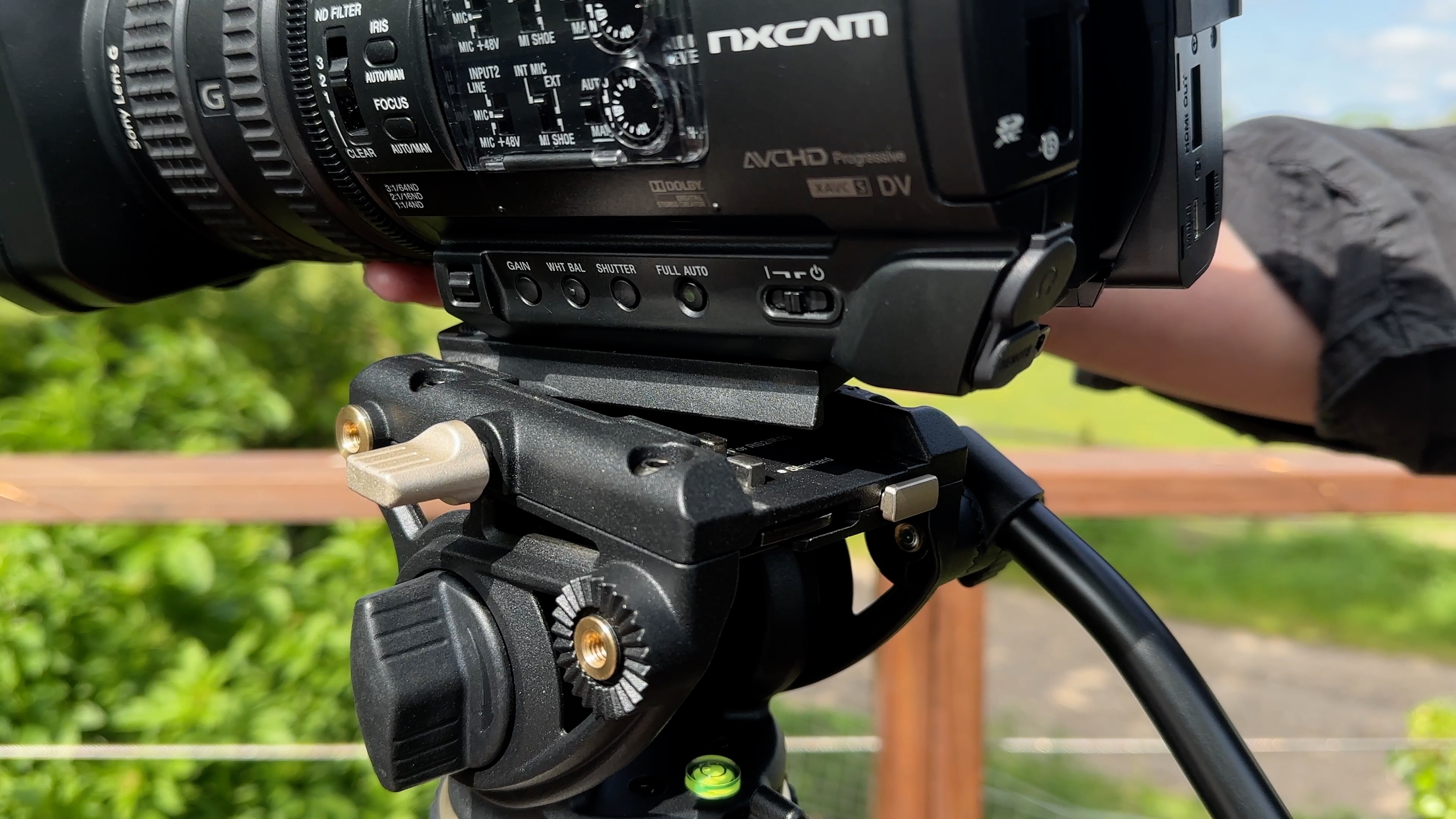
Build & Handling
Despite its heavy-duty status, the AD-100 is surprisingly light thanks to its 3K twill carbon-fiber leg sections. At 4kg you’ll be able to comfortably carry the tripod in its supplied bag (which also has a shoulder strap that you can attach which provides an alternative to the carrying handles). I found it easy to carry both the camera and tripod on my one-man test shoot (see this review’s supporting video).
To make the tripod easier to store the pan and tilt handle is initially short and stumpy. Fortunately, you can lose the metal lathed clamp and telescope the handle to a more useful length for performing professional camera moves. The handle is a silicon grip so it’s easier to pan and tilt with it even if you have a sweaty hand!
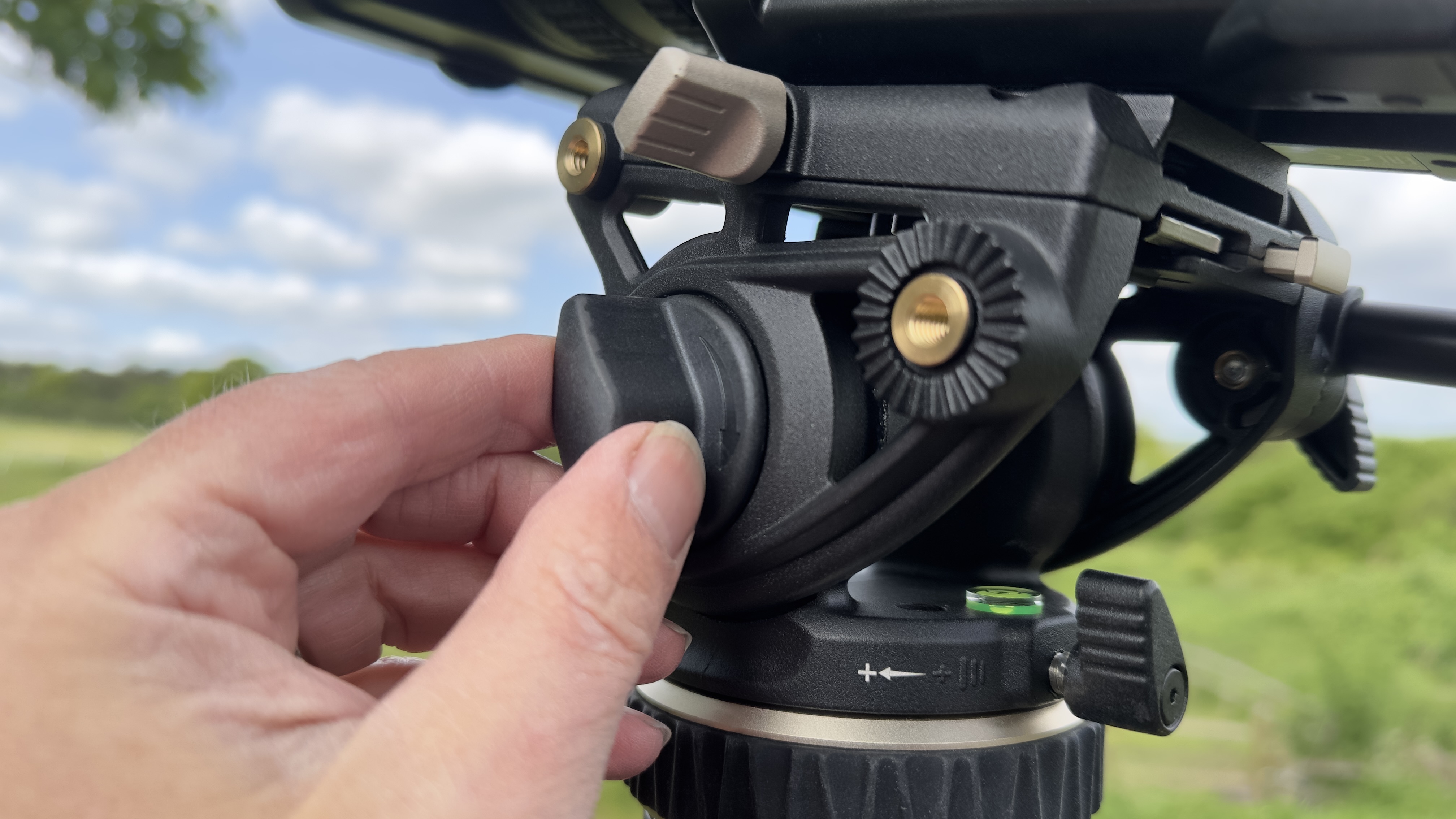
With many heavy-duty tripods, you need to attach the supplied tripod plate to the camcorder and then slide the plate through a groove on the tripod head. This can be a fiddly and time-consuming operation, especially if you’re eager to get on with filming rather than fiddling.
The AD-100 has a handy quick-release tripod plate that enables you to detach the camera from the tripod instantly with the press of a button. You can also lower the plate quickly onto the tripod head and the camcorder will attach with a satisfying click. You can then secure the attached camcorder by tightening a knob next to the quick-release plate. The tripod head has been designed to be compatible with Manfrotto and DJI RS quick-release plates so you can move your camera from the AD-100 to a gimbal (or vice versa) quickly and easily.
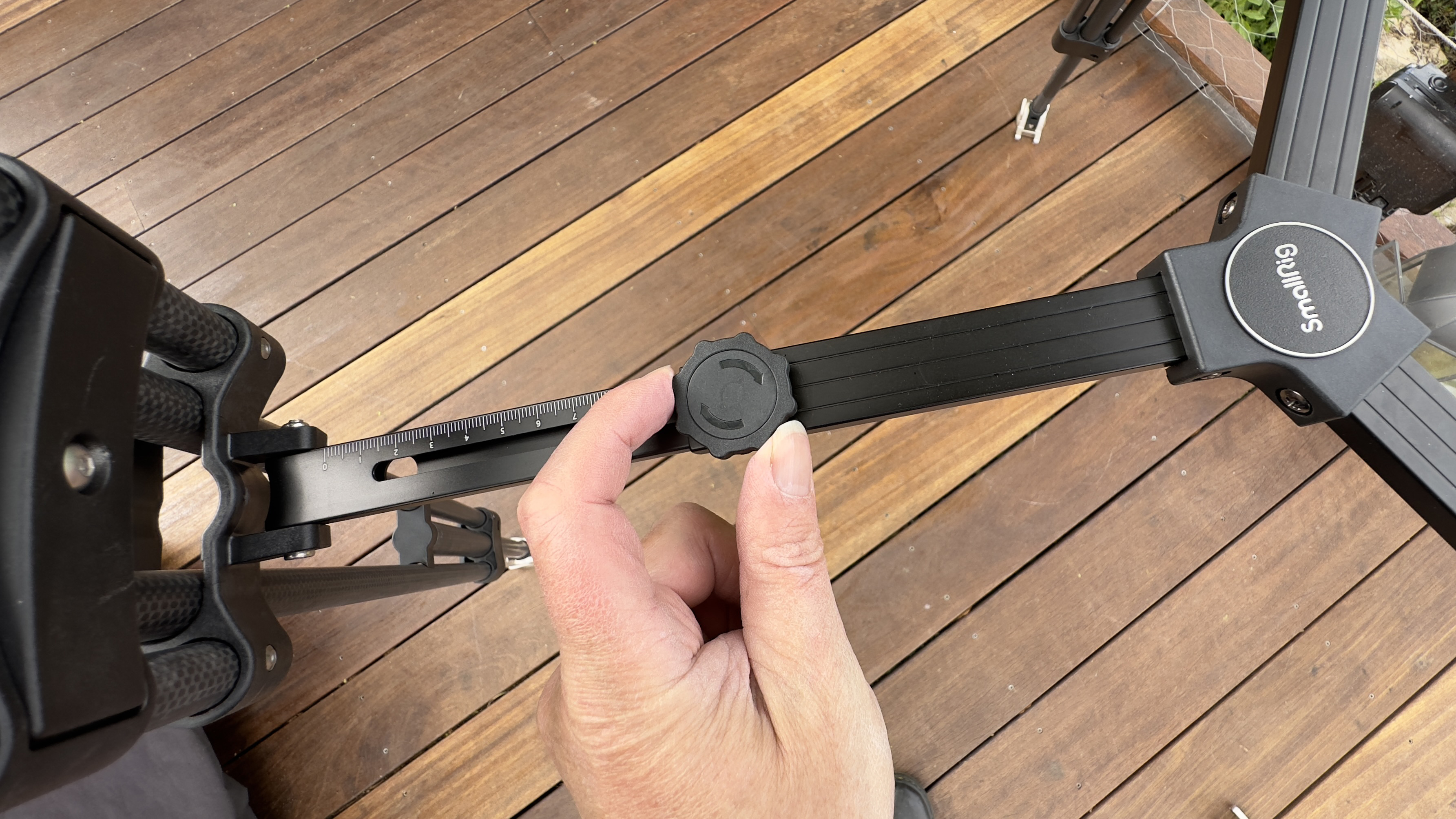
I’ve been on shoots where I’ve had to rummage through my pockets to find a coin or keys to screw the tripod plate to my camera. Occasionally the camera will start to slip from its mounting and spoil a shot. Fortunately, the AD-100 has a little slot below the quick-release plate that accommodates a supplied Allen key. This key is designed to make sure that the tripod plate’s screws are firmly tightened. This welcome attention to detail is another example of SmallRig’s understanding of the needs of videographers.
Another nice touch is the three silicon grips that adorn the top of each leg. These give you a more comfortable and secure grip if you have to move the tripod with a heavy camera attached to it. You can also unscrew the telescopic arm and attach it to the left-hand side if you’re a left-handed camera operator.

Performance
One thing that I’ve always found tedious in relation to tripods is the multiple clasps or rings you need to loosen and then tighten to extend their legs to the desired height. A typical tripod (such as my Benro TSL08A) will have three rings per leg that enable you to extend the tripod’s height in installments. It takes a while to rotate each ring to loosen it, extend the associated leg section and then tighten the ring with multiple rotations. This means I have to loosen and then tighten 9 rings to get the Benro tripod set up!
The AD-100 on the other hand has one chunky golden clasp per leg! After unclipping the three clasps it’s a simple matter to lift the tripod to extend the legs to get the tripod to the desired height and then clip each clasp closed in a click! Check out the video to see this time-saving mechanism in action. The three gold plastic clasps do look a bit cheap and clunky but they do an effective job of locking the legs at the desired height.
During my test shoot, I placed the AD-100 on a smooth wooden decking so I could film horses in an adjacent field from an elevated position. I was initially concerned that the feet at the base of the tripod’s legs would slip as I panned the camera, especially as the tripod is relatively light due to its carbon-fiber construction. Fortunately, the textured rubber grips at the base of the tripod retained a firm hold on the smooth wooden flooring and it remained firmly in position throughout the shoot. A quick-release button on each leg enables the removal of the rubber feet to reveal two spikes that give the tripod extra purchase on more rugged terrain.
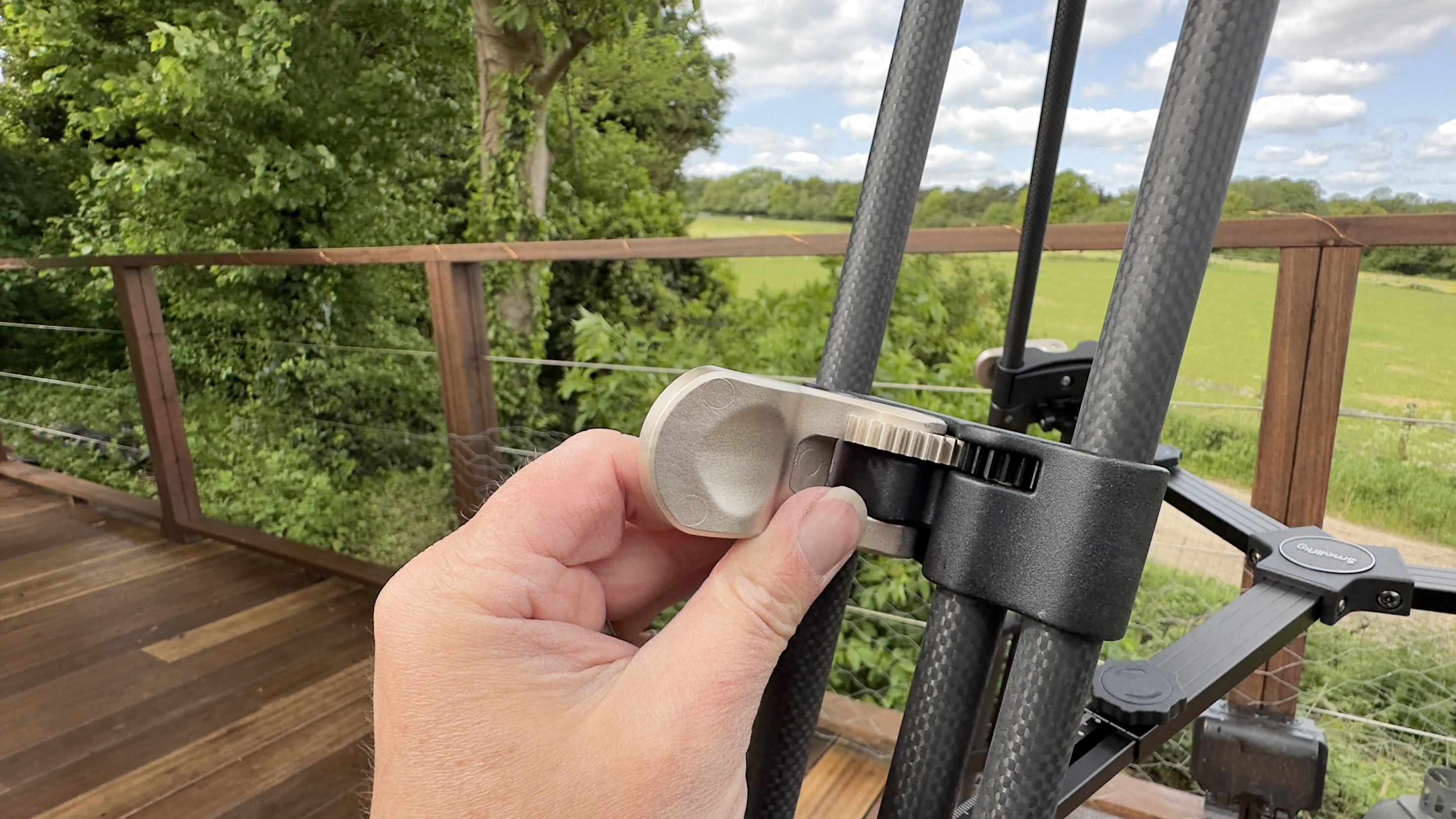
A dampening dial (or ring) enabled me to adjust the resistance of the panning movement to change the speeds of my pans. Rotating it left (clockwise) towards a + icon increased the resistance of the fluid head which was perfect for capturing smooth slow pans. By rotating the ring counter-clockwise I could reduce the resistance and capture faster smooth pans. I was able to adjust the tension of the tilt too, enabling me to capture more complex moves such as a simultaneous pan, tilt, and zoom from a close tree to a distant horse (see supporting video). If your tripod is set up on uneven ground then an adjustable ball can be loosened and rotated until a spirit level indicates that your camera is level.
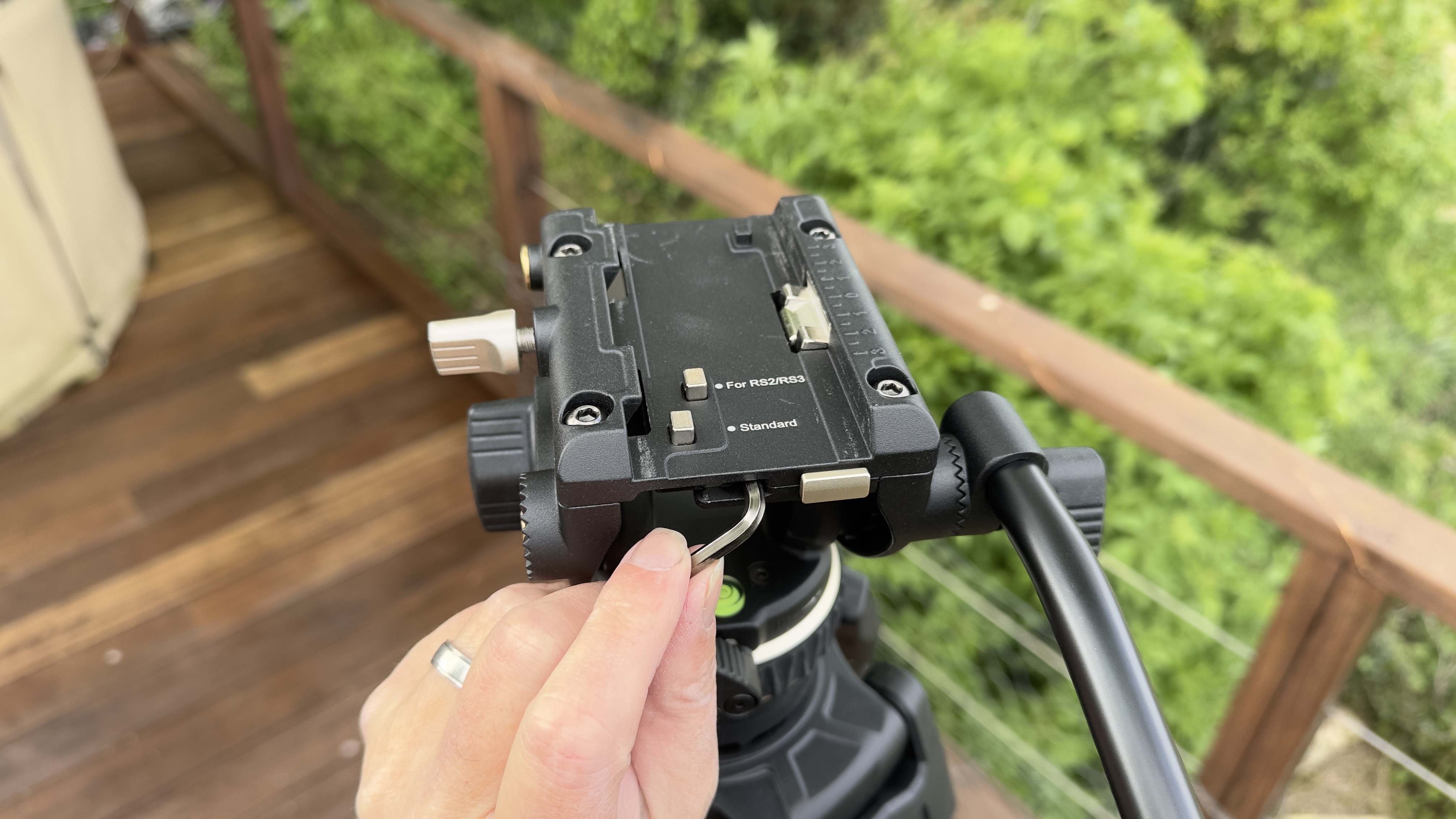
Verdict
The AD-100 is a useful asset for videographers who need to perform complex camera moves using a classic fluid-head tripod. Thanks to its carbon-fiber legs it is comfortable to carry and despite its relatively lightweight status, it’s capable of carrying out heavy-duty maneuvers with larger cameras and camcorders. Little touches to detail such as a built-in allen key compartment are very welcome and the ability quickly deploy the tripod to the desired height with the minimum of clamp-fiddling gives it an extra star!








